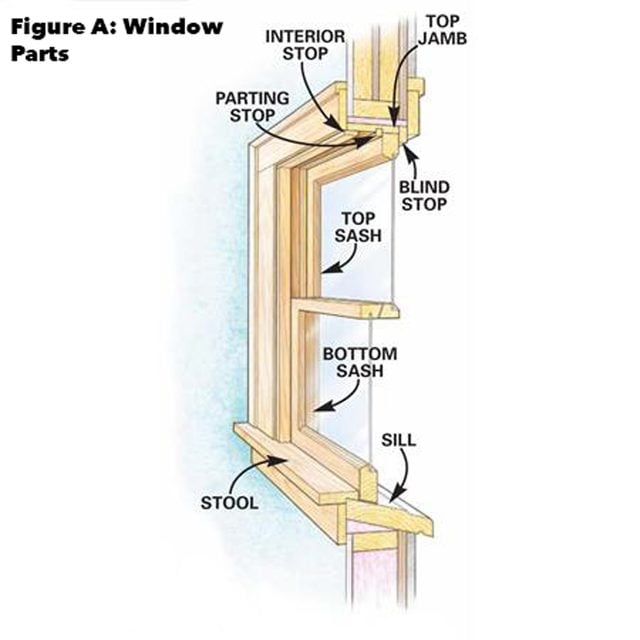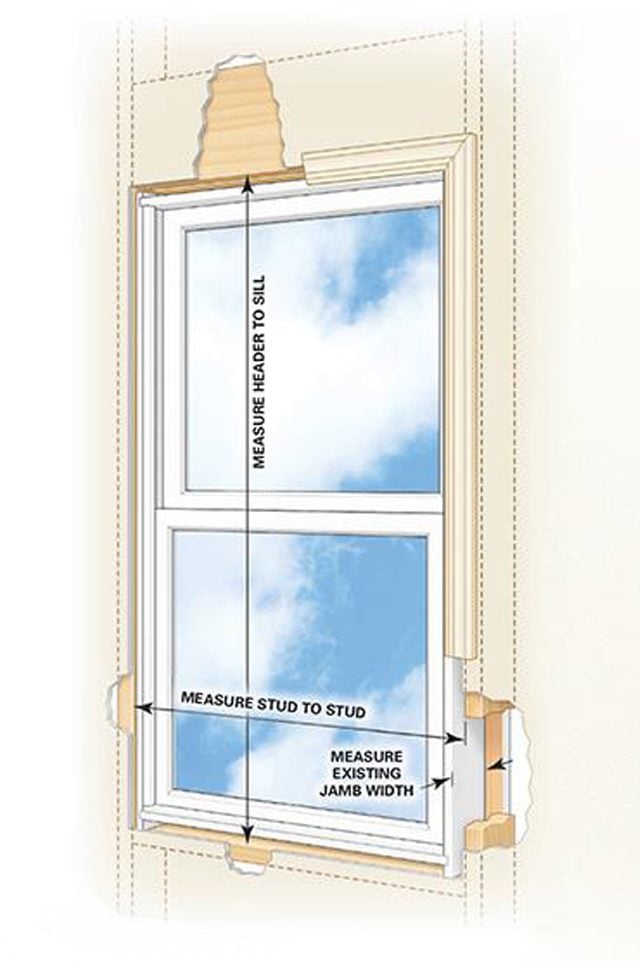


Two easy ways to pull out old windows and put in new wood or vinyl replacement inserts or double-hung sash replacement kits.
![]()
Time
![]()
Complexity
![]()
Cost
Ready to replace your drafty old windows with new energy-efficient units? We'll show you the two easiest ways to pull out old windows and put new ones in—and you don't have to tear off the interior moldings or disturb exterior trim and siding to do it.
In this article, we’ll show you step by step how to remove the old sash from double-hung windows and mount either a new sash kit or a wood or vinyl replacement insert inside your existing window jamb. Even a beginner can do it. In case you’re looking for repairs, here’s how to fix a double hung window. Read on to learn how to replace windows.
Both the sash replacement kit and the wood or vinyl replacement insert mount inside your existing window jamb, in the place that was occupied by the old sash. They both fit in the space between the outside stop, called the blind stop, and the removable interior stop (see Fig. A). The sash replacement kit is designed to replace the sash in double-hung windows only. Wood or vinyl replacement inserts, on the other hand, are self-contained units with their own jamb and sash, and can, therefore, be slid into almost any type of window jamb. They are available as double-hung, sliding or casement-style windows.
Either type of replacement window must be installed in a solid, rot-free jamb. Inspect your old window frame carefully for signs of water damage. Pay particular attention to the sill. Probe with a screwdriver to uncover hidden soft spots. Normal exposure to rain and snow often causes the exposed parts of poorly maintained windowsills or the lower sections of the exterior trim to rot. An experienced carpenter can usually repair these areas with sections of new wood or you can use an epoxy repair system. Rot along the top or interior parts of windows, including the window jamb, is more difficult to repair and often signals a bigger problem. Don’t mess with repairs when installing windows. Plan on tearing out the entire window and installing a new one.

Family Handyman
Figure A will help you to understand the parts of a window. Measure very carefully before you place an order, no matter what type you install. There’s nothing worse than discovering that your non-returnable, custom-sized window doesn’t fit.
If your house was built before about 1940, you’ll likely have double-hung windows with sash weights and cords like the ones shown in this article. Newer double-hung windows may have springs or jamb liners instead, but once these are removed, the replacing windows in old house process are the same.

Family Handyman
You can replace windows in just a few hours each, but first, you have to get accurate measurements to order the new ones. It’s easy to measure the rough opening width and height once you remove the wood trim. But many DIYers make the mistake of not getting a precise depth measurement. If the window frame doesn’t sit flush with the wall, you’ll have to plane and sand the window frame or thicken the jamb depth with furring strips. That turns a relatively easy job into an all-day affair. So take your time and use a ruler to get the right depth.
Measure the width between the side jambs at the top, middle and bottom and record the smallest measurement. Measure all the way to the jamb, not the blind stop or parting stop (see Fig. A). Now measure the height from the top jamb to the sill (see Fig. A). Measure both sides and the middle and record the smallest measurement. Finally, determine the sill angle and specify this when you order a sash replacement kit to make sure the jamb liners fit tight to the sill. This step isn’t necessary for ordering wood or vinyl replacement inserts.
Your objective is to buy a window that fits within that opening. If you don’t, you’ll have to make the opening smaller, or worse, enlarge the opening to fit the new window. And that also means reworking all the exterior trim, siding and interior wall surfaces. Take all of these numbers with you when you go shopping, and know that you can custom-order odd sizes if no stock sizes fit your opening.